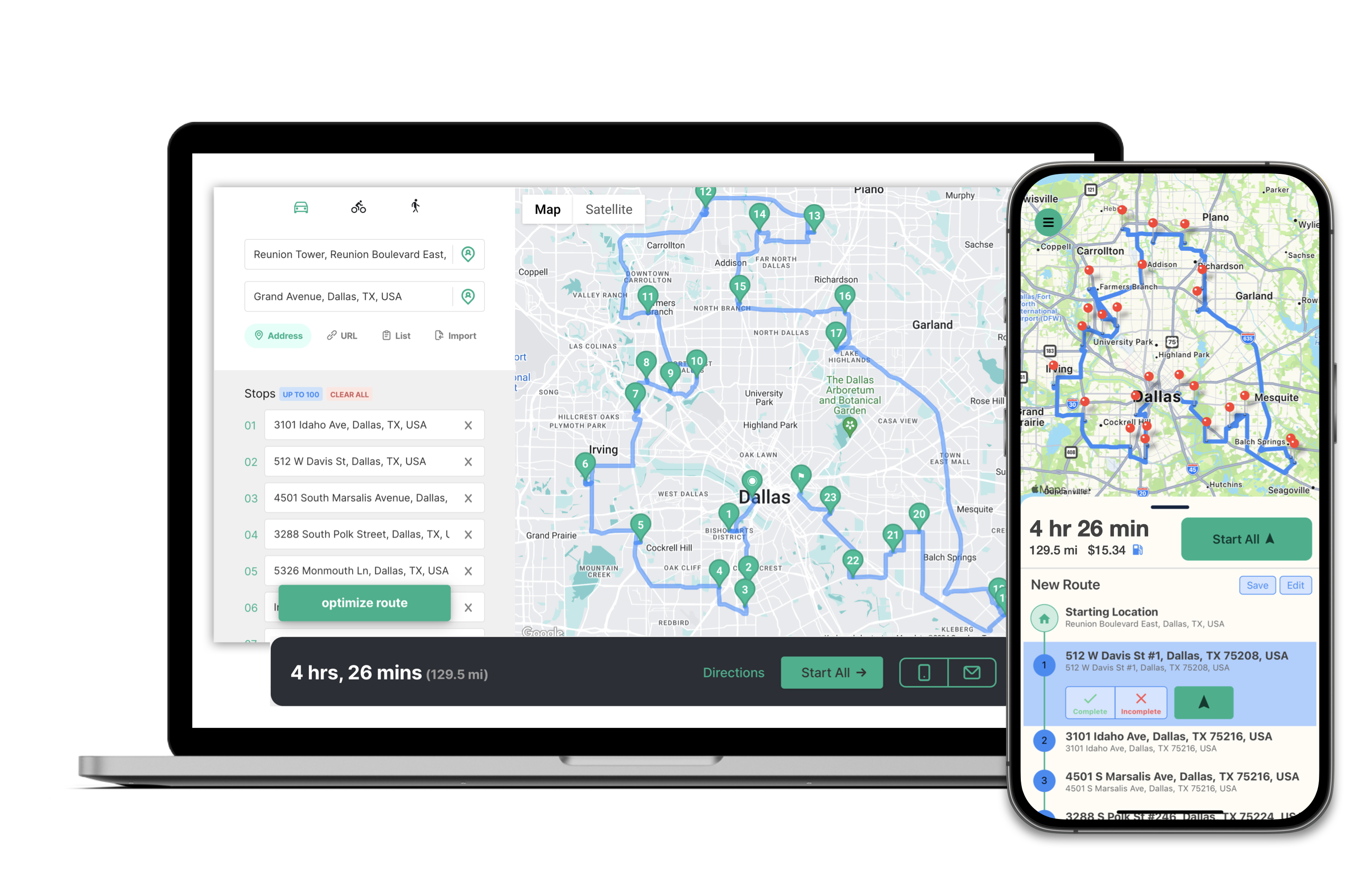As big as Amazon is, I’ve been wondering why the Flex App has done a poor job tackling the routing challenge. It seems like Amazon should have a team that can build a tool that truly finds the most efficient sequence of stops in a route to prevent doubling back as much as possible. Surely getting customers their packages earlier is also better for Amazon’s bottom line? Surely less time driving means more satisfied drivers? Curious, I took to the r/AmazonFlexDrivers subreddit to learn more. Here is what I learned:
The Amazon Flex app is INTENTIONALLY bad at routing.
The Flex app:
- Does not truly optimize routes in the fastest sequence possible
- Does not allow flex drivers to place their home as the last stop, leaving drivers sometimes 50+ miles away from their home once they finish a route
- Has pretty poor UI
- Leads drivers to double back on many routes, costing them more in fuel
Apart from the numerous other issues facing flex drivers, I learned that drivers are responsible for their own fuel costs and maintenance. By creating these awful routes, drivers are spending money out of their own pockets to meet their gas needs. Now why does Amazon build their routes this way?
Why Amazon Flex app designed like this?
We can really only speculate but there is a theory that makes a lot of sense. Amazon wants to orient routes around the fulfillment center. This is because if there are issues with packages deliveries, they can be taken directly back to the center. The problem here is that these are pretty rare instances for drivers. The ones I’ve spoken to would much rather just have the most efficient route off the bat. Amazon is clearly prioritizing this aspect over the comfort and ease of drivers, even customers getting their packages earlier. If they are, then it’s clearly worth it for them, but is it worth it for the drivers?
Drivers find themselves in a catch-22 situation. On one hand, they are attracted to the flexibility and earning potential that Amazon Flex promises. On the other, they are confronted with inefficiencies that seem to undercut the very premise of what makes gig economy jobs appealing. The additional time spent on the road not only increases fuel consumption but also accelerates vehicle wear and tear, directly impacting drivers' net earnings and job satisfaction.
The broader question then becomes: How does this approach align with Amazon's customer-centric philosophy? It's a well-known fact that Amazon places customer satisfaction at the core of its operations. However, the inefficiencies in the Flex app routing system raise questions about how this philosophy is applied across different facets of its business, especially those involving front-line workers like Flex drivers.
What is the solution?
What we do know is that there are alternatives to the flex app that drivers are now gravitating towards to help them save time and money and gas money— one of which is our platform here at Routora. Using AI to transform route planning, we originally built our product to help small businesses create more efficient routes for their delivery needs. However, we’ve observed a great amount of interest in the Flex community and are striving to build a product that meets those needs.
While Amazon Flex offers a valuable service to both customers and those looking for flexible work, the current routing inefficiencies present a significant challenge. By addressing these issues, Amazon has the chance to improve driver satisfaction, reduce unnecessary costs, and reinforce its commitment to both customer and worker satisfaction.
Amazon, step it up. In the meantime, I think we can help.
.png?alt=media&token=27c05e2a-f92c-4f6a-ae1c-753c7761dbdd)
